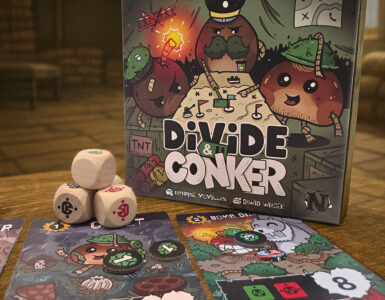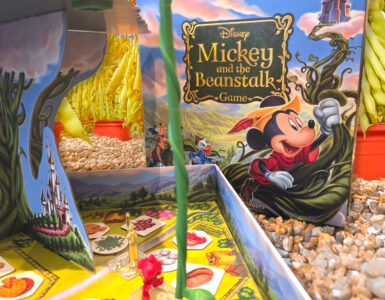Today we are going to be looking at Flashback: Lucy, the second game in the Flashback series. The first was Flashback: Zombie Kids, a story game based on the Zombie Kids franchise that was released a couple of years ago. Flashback: Lucy is the follow-up to that, but it is unrelated storyline-wise. Instead it follows a girl named Lucy as she takes over her family’s long-standing haunted mansion, and through a series of visions told as chapters, she unlocks the truth and story behind the mansion.
Now, I have never played Flashback: Zombie Kids, so I was coming at this along with the boys with a completely fresh, unseen view.
Firstly, I want to make it clear that this is very much a storytelling cooperative experience and not really a board game in the traditional sense. It is not even a cooperative board game in the usual way. There are questions that you need to figure out, and it feels very similar to the Osborne Puzzle Quest books that I particularly enjoyed reading and doing as a kid.
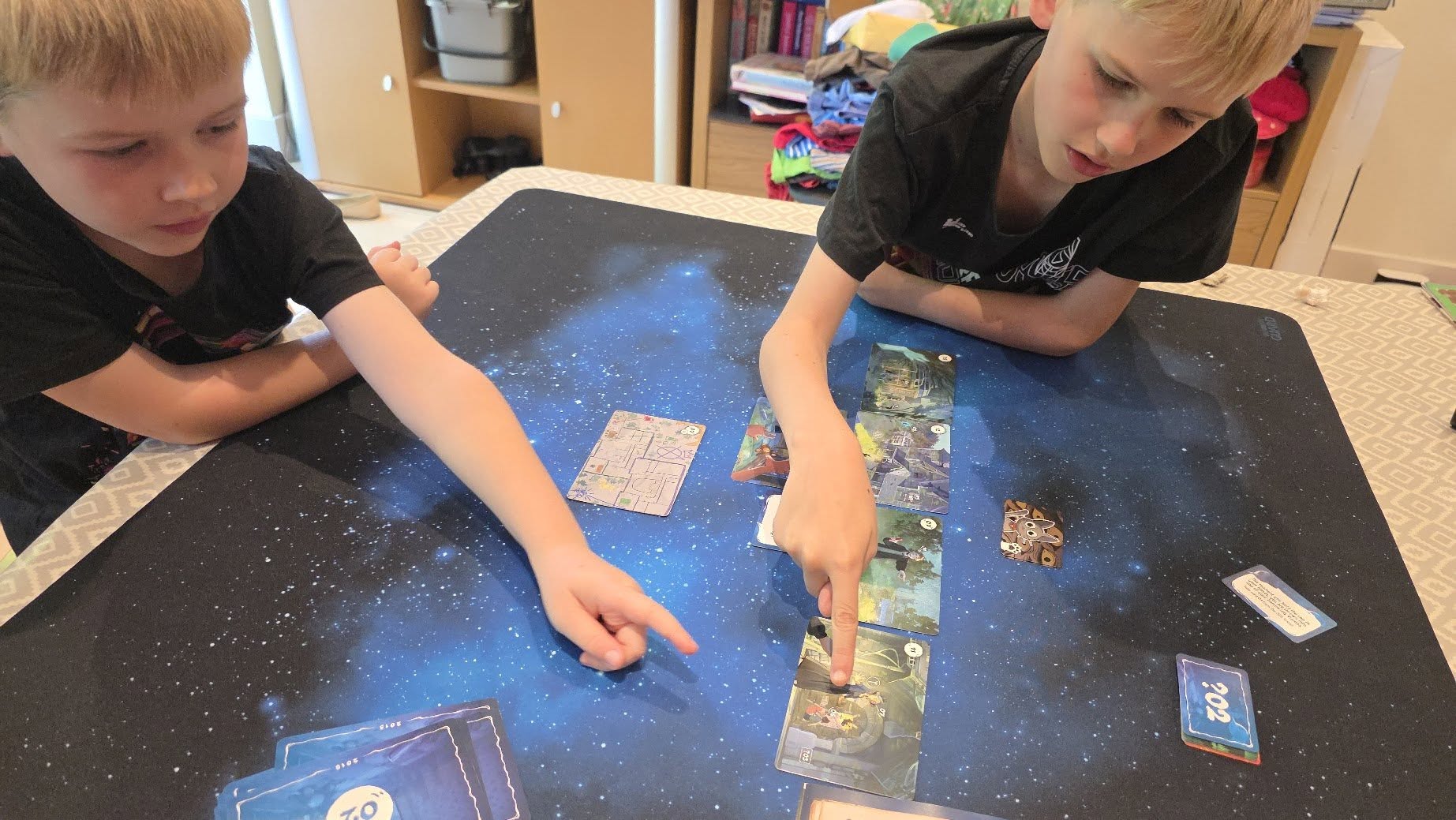
The game is presented in four chapters. Generally speaking, those chapters will have a short graphic novel part in the book, followed by some cards that give you information about characters. One by one, you turn over cards that give you access to different viewpoints in a vision.
This is the first bit that feels a little odd, as you need to control yourself from flipping over all of the cards at once. You could just turn everything over in about 20 seconds and then sit and study them all to work out the answers. While there are other mechanics that come in later chapters, if you rush through it you can finish the whole thing pretty quickly, especially if you are not too worried about whether you get the questions right or wrong. Getting them right or wrong is just a simple “yay” or “oh dear,” rather than anything that really changes how the game plays.
To get the most out of Flashback: Lucy, you really need to take your time with each card. Look at them carefully, work out what is relevant, and then decide as a group what the answers to the questions are. This is 100% best played as a group, although it could be played solo. I think it really shines if you play it with an adult who can help lead the story. In fact, the more you as an adult are able to act as a storyteller or games master and bring the images to life, the more everyone is going to get out of it.
The actual story is supernatural, centred around the haunting of the mansion. You look back through different years and generations to piece it all together. The game says it is for ages 8+, and while Toby (who is seven) was absolutely fine with it, I could see some kids, even at eight, being a little unsettled by some of the spookier content. That is worth bearing in mind.
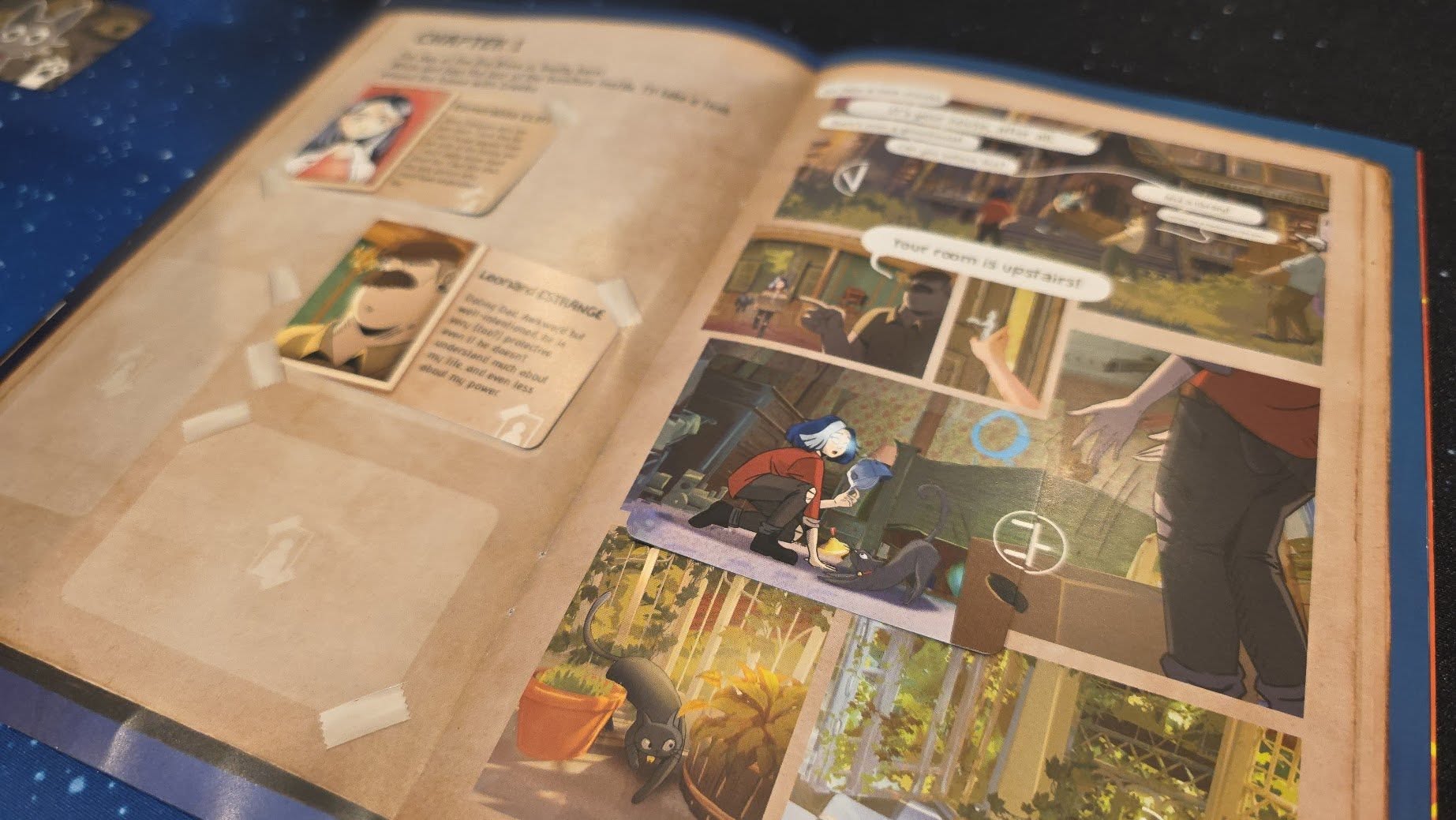
I liked playing through Flashback: Lucy, but if I am honest, I did not love it, and I think the boys felt something similar. Without blowing my own horn, I am a teacher by trade and a fairly good storyteller, and while the storyline is there and the graphic novel sections are cool, you do have to fill in a lot of the narrative yourself. Because you are so focused on the puzzles, it can sometimes hinder the storytelling. While the puzzles are fun, they do not necessarily link tightly to the story. I think I would have preferred it if solving them had more impact on how the story developed, rather than just being a way of tracking how well you did.
The story itself is interesting, and there are some genuinely cool and unexpected moments, plus some new mechanics that are introduced later on that keep you wanting to play through. That said, I think I prefer things like the Exit games, which slowly introduce mechanics and keep the experience tightly tied together, rather than this where everything can feel like it is dropped into your lap.
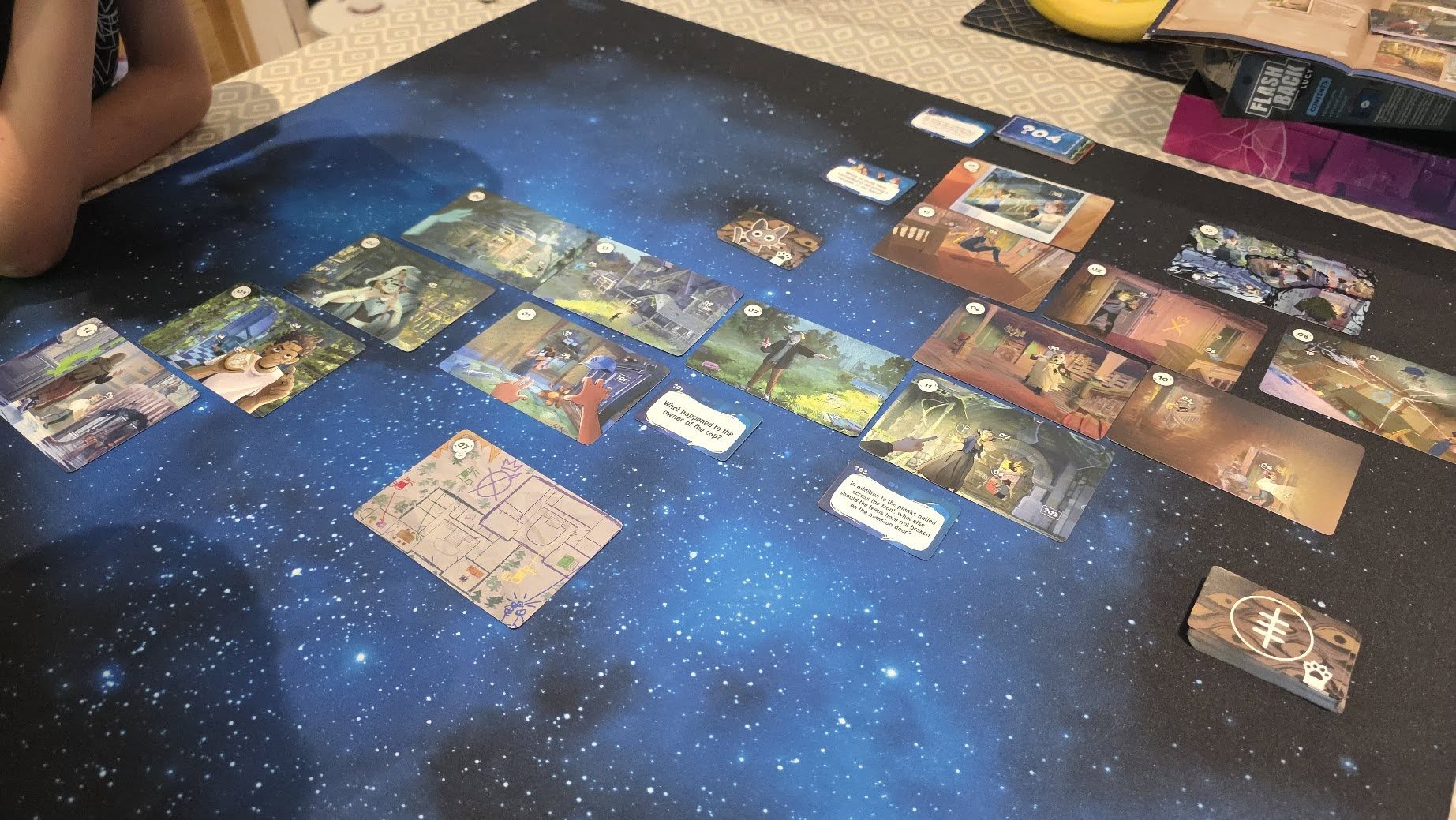
I have waffled a bit, mainly because I do not want to spoil anything about how the story plays out or the surprises it contains. There definitely is something here. But when thinking about whether you want to pick this up, I would say you need to view it as an afternoon’s entertainment rather than a game you will play again and again. You will play it once. While it is fully resettable and you could re-gift it afterwards, this is not a game that is going to hit the table repeatedly. However, if you view it as the equivalent of a cinema trip, planning it as an afternoon activity with the kids, it could definitely be something interesting and enjoyable, although I would not call it essential.




